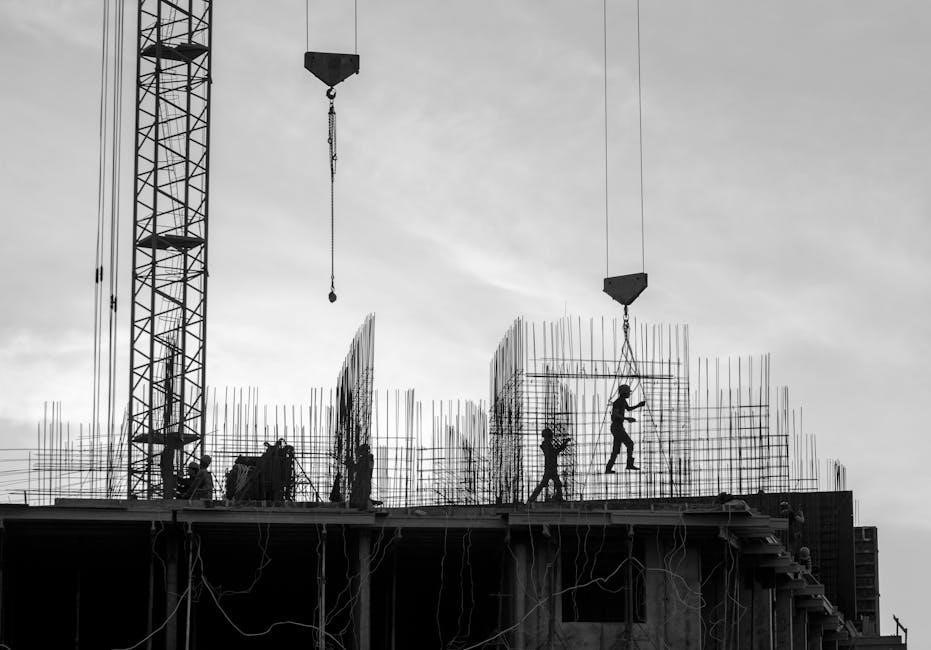Embarking on a DIY weld truck flatbed project can be a rewarding endeavor. Utilizing free PDF drawings, you can create a custom flatbed tailored to your specific needs. These projects offer cost savings and customization opportunities, making your truck a versatile workhorse.
Benefits of Building Your Own Flatbed
Constructing your own truck flatbed using free DIY weld truck flatbed drawings offers numerous advantages. Firstly, it allows for significant cost savings compared to purchasing a pre-made flatbed. The ability to customize the design to fit your specific truck model and needs is another major benefit. You gain complete control over dimensions, materials, and features, ensuring the flatbed perfectly suits your work requirements, whether it’s for hauling equipment, materials, or recreational gear. Building it yourself also provides an increased understanding of your truck’s structure and capabilities. Furthermore, this DIY approach enhances your welding and fabrication skills, leading to a greater sense of accomplishment. A custom-built flatbed can also be designed to be more durable and functional than standard models, providing long-lasting value. Lastly, it’s a chance to create a unique and personalized addition to your vehicle, setting it apart from others.
Understanding Free DIY Weld Truck Flatbed Drawings (PDF)
Free PDF drawings provide detailed blueprints for building your flatbed. These plans include dimensions, materials lists, and step-by-step instructions, guiding you through the fabrication process, ensuring a precise and safe build.
Types of Flatbed Plans Available
The world of free DIY weld truck flatbed drawings offers a diverse array of plans, catering to various truck models and individual needs. You can find designs tailored for specific manufacturers like Ford, Chevy, Dodge, and Toyota, including models like the Tacoma. These plans range from basic flatbeds to more specialized designs, such as utility and welding beds. Some plans even include options for incorporating a gooseneck hitch, adding another level of functionality. The availability of different styles ensures that you can find a design that best suits your requirements. Whether you need a standard, robust platform or a more customized setup, the variety of free PDF plans available online provides a solid foundation for your DIY project. Exploring different designs allows you to understand different building approaches and helps you make the best choice.
Key Elements in PDF Plans
Free DIY weld truck flatbed PDF plans typically include several crucial elements to ensure a successful build. These plans often feature detailed dimensions and specifications, providing exact measurements for each component. Step-by-step instructions are a standard feature, guiding you through the construction process logically. Many plans also incorporate hand-drawn sketches, offering visual aids to complement written instructions. Material lists are usually included, outlining all the needed supplies for the project. Cost estimates might also be provided, giving you a rough idea of the project’s expense. These plans also highlight important considerations, such as proper welding techniques and safety measures. Moreover, some plans offer multiple views of the design, allowing you to grasp the structure from different perspectives. These elements are critical in guaranteeing that the finished flatbed is precise, safe, and functional.
Planning Your DIY Flatbed Build
Careful planning is crucial for a successful DIY flatbed build. This involves selecting the right materials, considering load requirements, and ensuring you have the necessary welding equipment before starting the construction process.
Material Selection and Considerations
Choosing the right materials is paramount for a durable and safe DIY flatbed. Steel is a popular choice for the frame due to its strength and weldability. Consider using angle iron for cross bracing and supports, which can be sourced from metal bed frames. For the decking, options range from wood, like pressure-treated 4x6s, to metal sheets or tongue and groove planks. When using wood, ensure it’s properly treated to withstand weather conditions. You should also think about the weight of the materials, ensuring that the truck’s load capacity isn’t exceeded. Also, consider material availability, as larger stock metal may not be available at local hardware stores. Pay attention to the dimensions, making sure materials fit the overall design of the flatbed. The materials you choose will significantly impact the flatbed’s longevity and performance, so careful selection is essential. Also consider using metal for the frame and wood for the decking, as this combination is often used.
Essential Welding Equipment
Having the correct welding equipment is crucial for a successful DIY flatbed project. A reliable welding machine is the cornerstone, enabling you to join the metal components securely. Depending on the materials you choose, you may need a MIG, TIG, or stick welder. Make sure your welding machine is suitable for the thickness of the steel you’ll be working with. Alongside the welder, you’ll also need safety gear, including a welding helmet, gloves, and protective clothing to prevent injury from sparks and heat. You will also need clamps and magnets to hold materials in place while welding. Grinding tools to smooth the welds and to remove any sharp edges are also essential. A measuring tape and level will ensure the accuracy of the welding process. The right tools greatly influence the quality of the welds and the overall structural integrity of the flatbed. Consider investing in quality equipment to make the process safe and efficient.
Construction Process
The construction phase involves building the frame and attaching it to the truck. Decking is then installed. This requires precise measurements, welding skills, and careful attention to the project’s structural integrity, following the plan closely.
Frame Construction and Attachment
The initial phase of building your DIY flatbed focuses on the frame’s construction, which is crucial for the overall strength and durability of the flatbed. Typically, this involves welding together steel components, often angle iron, according to the precise measurements detailed in your free PDF plans. These plans will specify the type of metal needed, the cut lengths, and the weld points. The frame must be square and robust to support the intended load. After the frame is constructed, the next critical step is its secure attachment to the truck’s chassis. This often involves welding or bolting the flatbed frame to the truck frame, ensuring a solid, non-shifting connection. Checking the distance between the rubber stop and the frame of the truck is also essential. This step is vital for both the safety and functionality of the flatbed, so it’s important to use appropriate fasteners and welding techniques to avoid any issues during use. Proper alignment is essential for a safe and functional outcome, so double-check all measurements before welding.
Decking Options and Installation
Once the frame is securely attached, the next step is selecting and installing the decking for your DIY flatbed. There are various decking options available, each with its own benefits. Wood, such as pressure-treated lumber, is a common choice, providing a cost-effective and relatively easy-to-install surface. Alternatively, steel or aluminum plates can be used for a more durable and robust option, particularly for heavier loads. The installation process will vary depending on the material chosen. Wood decking often involves securing planks to the frame using screws or lag bolts. Metal decking, on the other hand, typically requires welding or bolting to the frame. Whichever material you choose, it is essential to ensure that the decking is securely attached and flush with the frame to create a safe and usable surface. When selecting the material, consider both the intended use of the flatbed and the overall weight it will add to the truck. The flatbed plans will often provide recommendations for decking materials and installation techniques.
Final Steps and Safety
After the build, ensure all welds are strong and the deck is secure. Add finishing touches like paint or protective coatings. Prioritize safety by checking all connections and following safe welding practices.
Finishing Touches
Once the main structure of your DIY weld truck flatbed is complete, the finishing touches are what will elevate its functionality and appearance. This includes applying a durable coating like paint, powder coat, or truck bed liner to protect the metal from rust and the elements. Consider adding side rails, headache racks, or custom storage solutions to further tailor the flatbed to your needs. Ensure all edges are smooth and any sharp corners are addressed to prevent injury. Installing lights, reflectors, and mud flaps will help with visibility and safety. If you chose a wooden deck, consider a sealant to protect it. Also, ensure all bolts and fasteners are tightened, and any welds are inspected to ensure they are strong. This is also a good time to test the functionality of any added features, such as lights or storage compartments. Finally, a thorough cleaning will show the final product and prepare it for use. Pay attention to the details, it will add to the overall value of your truck.
Safety Considerations
Safety is paramount when undertaking a DIY weld truck flatbed project. Start by thoroughly reviewing your chosen PDF plans to understand all measurements and specifications. Always wear appropriate safety gear, including safety glasses, welding gloves, and a welding helmet, while working. Ensure your welding area is well-ventilated to avoid inhaling harmful fumes. When lifting heavy materials, use proper lifting techniques or seek help to prevent injuries. Double-check all welds to ensure they are strong and secure. Be mindful of electrical components when wiring lights and ensure they are properly insulated. Secure all loads appropriately when using the flatbed to prevent shifting during transport. If using wood, check it for splinters and treat it with a sealant to prevent rot and degradation. Periodically inspect all welds and fasteners to ensure they haven’t weakened. Always prioritize safety over speed, and never rush the process, this will prevent serious injuries.



